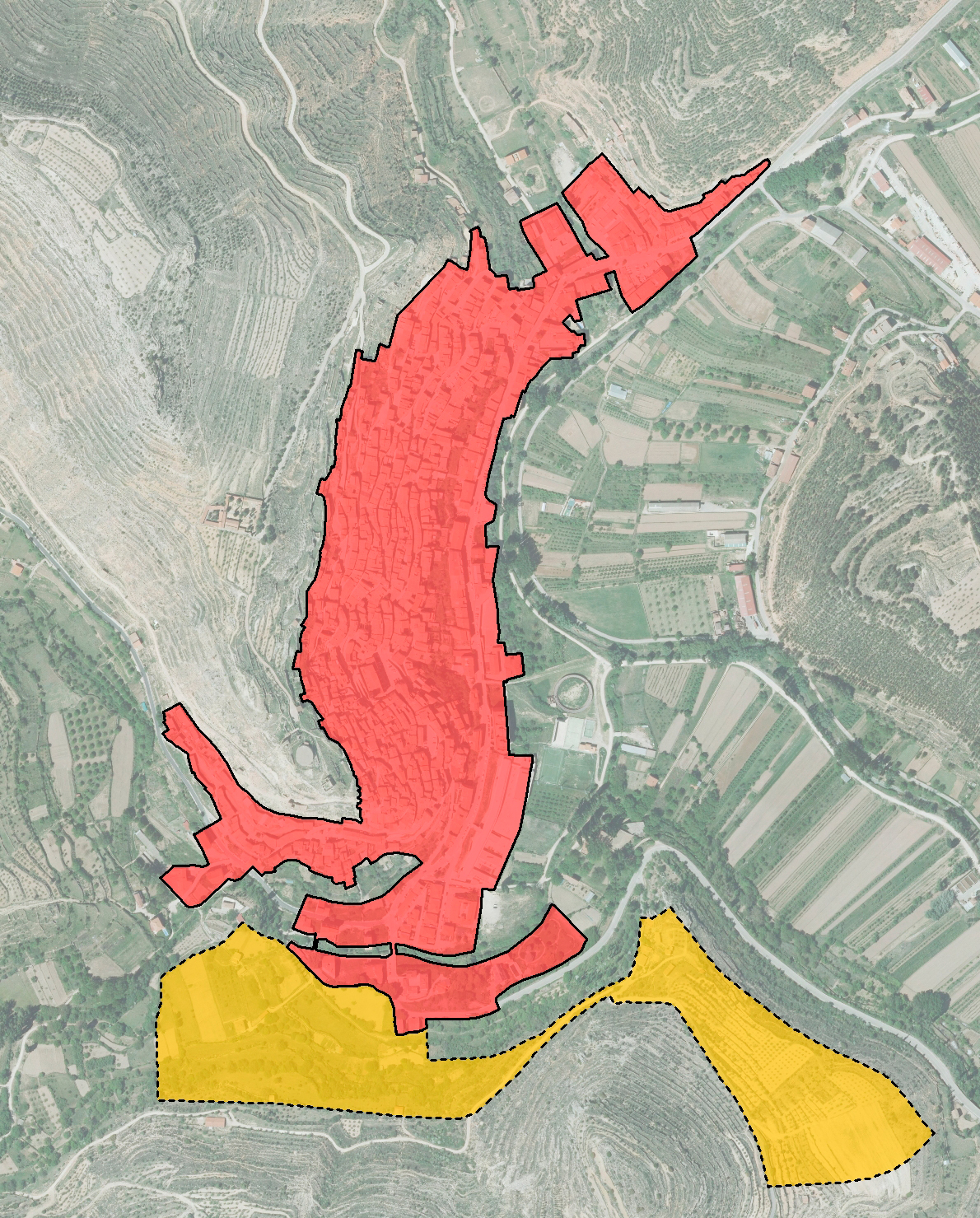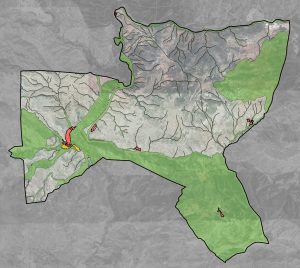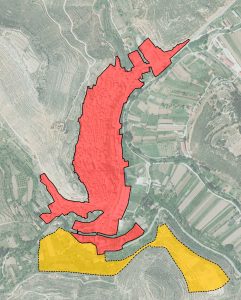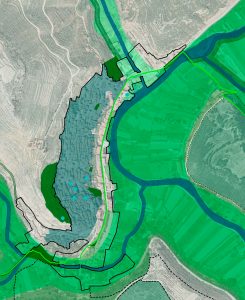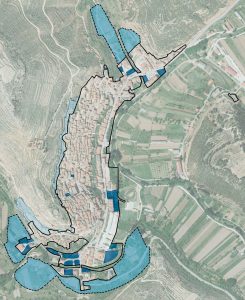DESCRIPTION
The municipality of Ademuz is located in the northwest of the province of Valencia, about 100 km from the provincial capital, in the El Rincón de Ademuz region. It is a Valencian enclave between the Autonomous Communities of Aragón and Castilla – La Mancha. With an area of 106.6 km², its main population nucleus is Ademuz, and it is possible to find villages, as well as various masses or hamlets within its municipal limits, such as Sesga, Val de la Sabina, Mas del Olmo or El Soto, all of them inhabited , but with a minimal or residual population.
Ademuz treasures a rich history, which has left traces on its territory, in the form of archaeological remains and buildings of great value, which join a popular architecture of enormous interest . The landscape, natural, paleontological, ethnological, archaeological and architectural wealth, place this town at the head of the municipalities with the most relevant and varied heritage in the Valencian Community. The state of conservation of this heritage and the sensitivity of the inhabitants of this land, who, with few exceptions, have been able to enhance it, thanks to the laudable involvement of architects, historians, archaeologists and other professionals, are solid elements on which to support the plan’s proposals.
However, what should preside over any decision that may be taken regarding the future of the people is the need to articulate measures and a model (in this case urban planning) to fight against depopulation.
The objectives that the new general plan is summarized in the following decalogue:
- From the environmental and landscaping point of view, the attribution to part of the rustic soil, of the degree of protection that is its own and necessary to safeguard its values, as well as the zoning of the rustic soil with the highest possible degree of detail, incorporating in the It is also a precise delimitation of all uses and, in particular, of those that suppose a greater environmental impact, that is, extractive uses.
- With regard to protected undeveloped land, which accounts for most of the municipal term, the establishment of a regulation that, to guarantee its better conservation, allows the possibility of carrying out the activities that have traditionally been developed in it ( and they have allowed enjoying the territory that Ademuz offers today), as well as others related to leisure and adventure sports, etc.
- The preservation of areas where there are natural risks, specifically flooding, of new growth, keeping only the sealed soils of historical origin and great cultural value. In this sense, the urbanizable land is declassified and part of the urban land on the Rambla de La Virgen and the urbanizable land is maintained in an area whose lower elevation is eight meters above the channel, which passes through an open space and without the possibility of constriction
- The adequacy of the forecasts of growth of the sealed soil to the thresholds set in the ETCV and to the real expectations of the municipality, from a containment perspective, which is compatible with the incorporation into the urban soil of the peripheral areas of the villages, where many persist buildings of historical origin and great heritage value.
- The provision of productive land in sufficient quantity to favor, in the shortest possible time, the incentive to create companies and the transfer, in an orderly manner, of some activities to the new sector. This land is located in the existing industrial estate (promoted by the public administration), whose surface is trimmed to meet the maximum growth standards indicated by the Territorial Planning Service.
- The identification of all the local heritage and its protection in the corresponding Catalog of Protections, so as to guarantee its preservation, promote appreciation and respect for it by neighbors and visitors, and interpret this wealth as the basis for promoting quality cultural and leisure tourism. This catalog is an extension to the entire territorial term, of the Catalog of Protections of the Traditional Historic Nucleus of Ademuz that is being processed by the town hall. It must be emphasized that, from the perspective of the general plan, the Traditional Historical Nuclei of the villages will also have the status of Locally Relevant Property.
- The delimitation of the perimeter of the urban land in all the villages and the articulation of a regime that allows the recovery of the buildings of historical origin that exist in its periphery and constitute a substantial part of the heritage and urban landscape of these towns. The aim is not to simply classify these areas as urban, but to regulate a regime that legitimizes “simpler urbanization requirements derived from its moderate density, its agrarian environment and its poor motorization” (art. 25.5 of the LOTUP). If in the future a more appropriate mechanism is arbitrated, the current legislation at that time will be followed.
- The delimitation, in due measure, of the provisions for green areas, school equipment and homes subject to some protection regime.
- The incorporation of urban planning regulations adapted to all the current sectoral regulations, supra-municipal protection figures (Natura 2000 Network) and current, contrasted and rigorous criteria for regulating this type of area.
- The elaboration of an inclusive plan, which takes into account the most disadvantaged groups and in particular, the elderly, with an increasing weight in the municipality as a whole.
DETAILS OF THE PROJECT
Locality: Ademuz (Valencia, Spain); Promoter: City Council of Ademuz; Municipal term area: 10,039 Ha.; Urban Land: 40 Ha.; Able for urbanise Land: 11 Ha.; Not able for urbanise land: 9,988 Ha.; Population cores: 5; Processing status: In process


